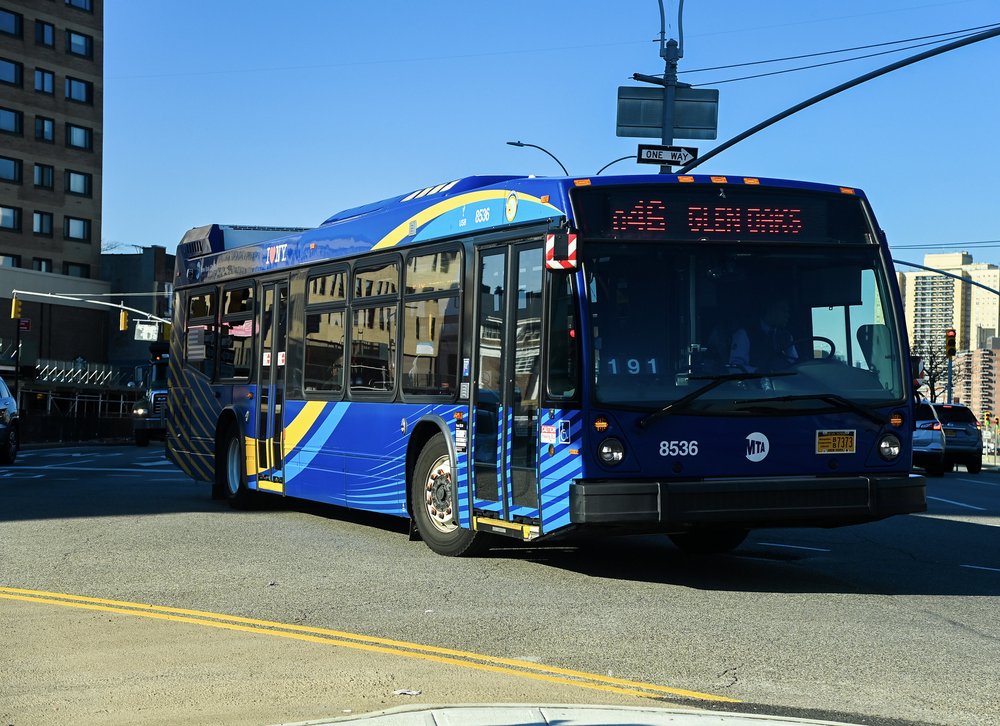MTA pushes first overhaul of Queens bus routes since 1950s
Dec. 12, 2023, 4:23 p.m.
The borough’s current bus map is drawn along old trolley routes that were discontinued more than 60 years ago.

The Queens bus network would see its first major redesign since the 1950s under a plan released by the MTA on Tuesday.
The agency proposes creating 15 new routes in the borough, eliminating 10 existing ones and tweaking dozens of others. Officials said the changes would mean another 200,000 riders in the borough would wait no longer than 10 minutes for a bus between 6 a.m. and 9 p.m. on weekdays.
“I have always said buses are the engine of equity in our city. They disproportionately serve seniors, people with disabilities, residents of low income neighborhoods, especially communities of color,” MTA Chair Janno Lieber said at a press conference. “And all of the people who don't have … access to the subway, Queens is the center of that issue.”
The redesign includes a new express bus route from Laurelton to lower Manhattan and a new route from Ozone Park to Cambria Heights that would travel along Linden Boulevard to the Rockaway Boulevard station on the A line.
Officials said riders on the 10 routes that would be retired under the plan would be served by a new route.
The plan also reduces the number of bus stops in Queens. The MTA said fewer stops leads to faster service, and noted 83% of riders would continue to use the same stop.
MTA officials said the borough’s current bus map is drawn along old trolley routes that were discontinued more than 60 years ago.
The agency released its initial redesign for the Queens bus network in 2019, but the plan was delayed by the pandemic. MTA planners scrapped the proposed map in 2021 after pushback from local riders.
The MTA plans months of public outreach on the latest proposal, and hopes to implement the changes in 2025. Officials said the new network would cost $30 million more per year to operate than the current one.
Lieber said it’s crucial to speed up transit commutes in Queens, where buses run at an average of 9 mph — a slight increase from 2019, when they ran at an average pace of 8.74 mph, according to MTA data.
“Those riders deserve a strong system that's faster than walking,” Lieber said.
NYC Transit President Richard Davey said installing new bus lanes is another effective way to speed up commutes, and said he continues “to have dialogue with the DOT about where we would want to see bus lanes” in Queens.
City Transportation Commissioner Ydanis Rodriguez, who also attended the press conference on the redesign, blamed political pushback for the slow rollout of bus lanes under Mayor Eric Adams.
Rodriguez said one example could be seen on Fordham Road in the Bronx, where his agency scaled back plans for a bus lane after it was met with opposition from business leaders and institutions like the New York Botanical Garden and the Bronx Zoo.
“Sometimes we go to places such as Fordham that most of the elected officials say we don't want it here,” Rodriguez said. “The Botanical Garden said we don't want it as you want it.”
Rodriguez said the city is ramping up automated camera enforcement of cars that park in bus lanes.
Queens Lawmakers Ask MTA To Reconsider Reviled New Bus Plan